鹽水 八角樓
Brief History
Construction:
The Octagon Building was built in the 27th year of Daoguang, Qing Dynasty (1847) by Ye Kai Hong, a wealthy businessman from the famous sugar merchant's guild Ye Lian Cheng shop. The Octagon Building took 10 years to build by Fuzhou masters.
It was a three-story mansion with an area of over 300 Taiwanese ping. The first hall was a storefront, which was called “floor and a half” because the second story ceiling was very low.
The second hall is Minnan -Style building with three-bay which is a private dining hall and for the use of worshipping ancestors. The third hall is the existing Octagon Building in Yanshui.
Japanese occupation period:
In the early stage of the Japanese invasion of Taiwan, Japanese General Fushimi Sadanaru occupied the building and used it as a guesthouse. The first hall was demolished and rebuilt as part of the Yanshui City Street Project. In 1941 (the 16th year of Showa era), the Japanese authorities designated the location of General Fushimi Sadanaru's royal carriage as a historical site and proceeded to build the Octagonal Building as the Fushimiya Memorial Hall.
In 1942 (the 17th year of Showa era), the Second hall was demolished for the construction of the General Fushimi Sadanaru Memorial Hall. On the 50th anniversary of the Japanese invasion of Taiwan (1943), the Japanese government erected a monument to commemorate the event, and the monument contains the monument of "The Ruins of Prince Fushimi Sadanaru Imperial Retreat at Yanshui Port”.
Present:
- The back garden was restored and converted into a post office.
- Under the order of the Mayor of Yanshui, Wu Qi Yao, the inscription "The Yanshui Port Imperial House, Relic of Prince Jeanne of Fushimi Palace" was covered with cement, and now the cement has peeled off, the inscription "The Yanshui Port Imperial House, Relic of Prince Jeanne of Fushimi Palace" is still intact.
- The 92nd year of the ROC (2003), May 27th, was declared as a historic building.
- The 98th year of the ROC (2009), May 11th, was declared as a historic site.
- The building has been selected as one of the top 10 historic buildings in Tainan County and one of the top 100 historic buildings in Taiwan (at No 7).
- As of the result of the 921 earthquake, the Cultural Affairs Bureau of Tainan City Government south funding from the Council of the Cultural Affairs of the Executive Yuan, and to complete the entire restoration project by the end of 2005.
- The second-floor railings and shutters of the Octagon Building were severely damaged by a typhoon in 2017, and the Tainan City Government's Cultural Affairs Bureau completed a complete restoration of the second floor in 2018.
Architectural Features
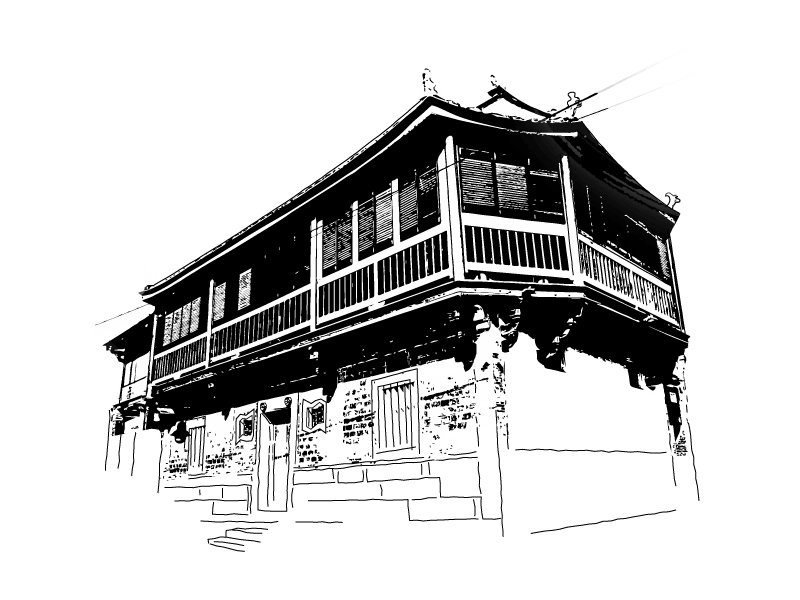
Ye Family introduction
The Octagon House is a large family home built by Ye Kai Hong, a native of Quanzhou, Fujian Province, and his four sons, Ye Ruei Si, Ye Bai Mu, Ye Chun Ting, and Ye Cheng Bo. The four sons of the Ye family joined hands to run " Ye Lian Cheng Shop", a merchant business that specialized in sugar. A series of production and sales processes, such as harvesting, sugar production, and exporting the finished products to China, were all jointly run by the Ye family.
Building material source
The Ye Lian Cheng Shop, located at the Yanshui Harbor, enjoyed the convenience of shipping, selling sugar to China by ship, and then transporting silk fabric made in China back to Taiwan for sale. On the return voyage, to have smooth sailing, in addition to the lightweight of silk, they usually transported China fir, bricks, tiles, and stones as "ballast," which later became the best material for the construction of the Ye family's large home.
China fir was soaked in sea water to keep moths from eating into the wood. However, the other parts of the building were damaged by time and natural disasters over the past 150 years, and have been restored to their current appearance.

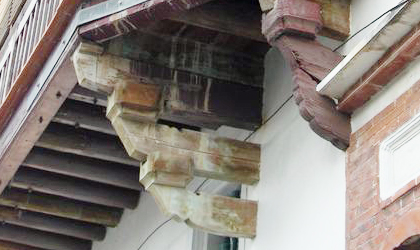 Beams, pillars, doors, and windows were all made with mortise and tenon joints, without using a single nail.
Beams, pillars, doors, and windows were all made with mortise and tenon joints, without using a single nail.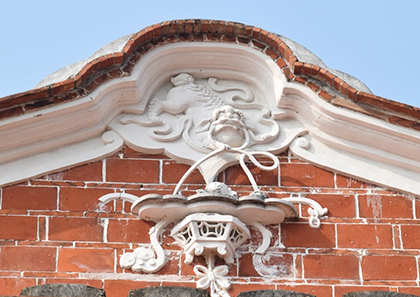 The second floor is made of wooden cloisters in the shape of an octagon with an East Asian hip-and-gable roof and stone carvings of lions and triangular toads at the top of the ridge. The interior space is the same as that of the first floor, with four rooms and one living room. The interior of the house is the same as the first floor, with four rooms, and a use a large number of lattice doors are used as walls.
The second floor is made of wooden cloisters in the shape of an octagon with an East Asian hip-and-gable roof and stone carvings of lions and triangular toads at the top of the ridge. The interior space is the same as that of the first floor, with four rooms and one living room. The interior of the house is the same as the first floor, with four rooms, and a use a large number of lattice doors are used as walls.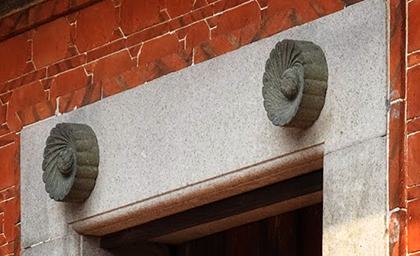 The backdoor is decorated with 18 petals of chrysanthemum, a symbol of the imperial seal of Japan.
The backdoor is decorated with 18 petals of chrysanthemum, a symbol of the imperial seal of Japan.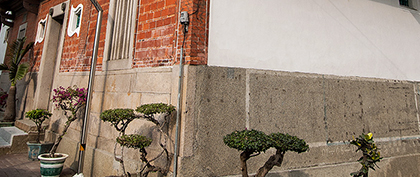 The front of the first floor is made of wood, while the upper part of the wall at the rear is made of brick and the lower part is made of stone.
The front of the first floor is made of wood, while the upper part of the wall at the rear is made of brick and the lower part is made of stone.